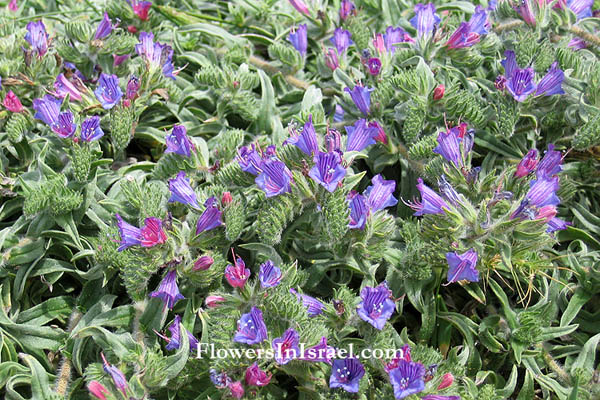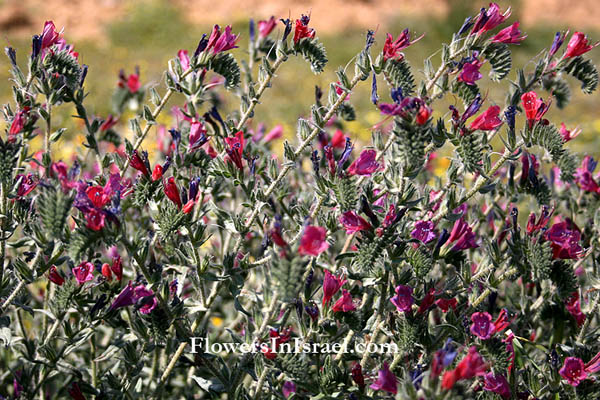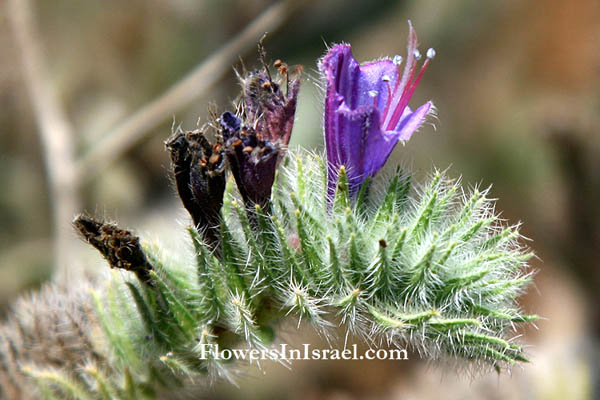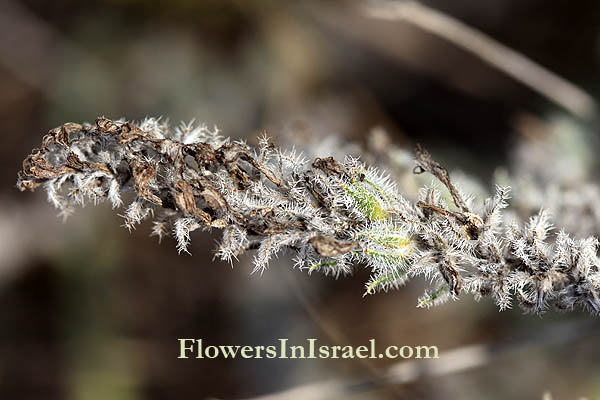Hebrew: עכנאי שרוע, Arabic: زهرة الأفعى ضيقة الأوراق
| Scientific name: | Echium angustifolium Miller | |
| Common name: | Hispid Viper's-bugloss | |
| Hebrew name: | עכנאי שרוע | |
| Arabic name: | زهرة الأفعى ضيقة الأوراق | |
| Plant Family: | Boraginaceae, זיפניים |

|
| Life form: | Chamaephyte, semi-shrub | |
| Leaves: | Alternate, entire | |
| Flowers: | Red, violet | |
| Flowering Period: | March, April, May, June, July, August | |
| Habitat: | Batha, Phrygana | |
| Distribution: | Mediterranean Woodlands and Shrublands, Semi-steppe shrublands, Shrub-steppes, Deserts and extreme deserts | |
| Chorotype: | Mediterranean | |
| Summer shedding: | Perennating |

Derivation of the botanical name: Echium, echis, "a viper," the nutlets appearing to represent a viper's head. angustifolium, angustus, "drawn together, narrow"; folium, leaf; meaning narrow leaved. Bugloss (Greek origin), means ox tongue, apparently because of the roughness of the leaves. The hebrew word עכנאי, akhnai, by the foreign name echium, derived from echis, a viper.


Location: Netanya, the Dora rain pool |